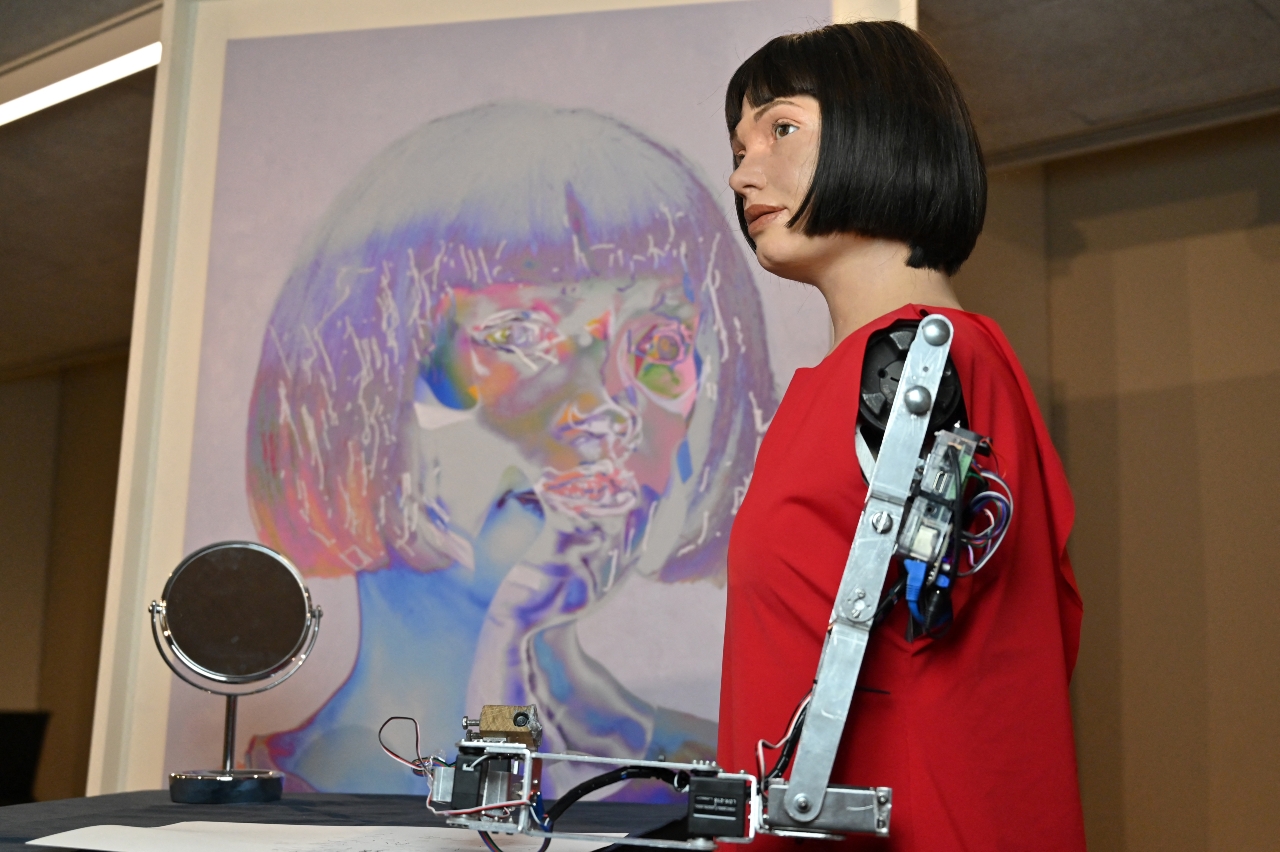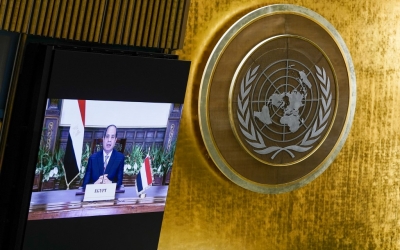Egypt detains artist robot Ai-Da ahead of groundbreaking art show at pyramids

Ai-Da, a humanoid robot artist, was released on Wednesday after being held by Egyptian customs officials for 10 days due to "security issues".
The robot's clay sculpture, based on the riddle of the Sphinx, was due to be part of the first contemporary art exhibition at the pyramids for 4,500 years which opens on Thursday.
Aidan Meller, who first unveiled Ai-Da two years ago, said border guards had detained the sculpture and the robot because she had a modem and cameras in her eyes, which she uses to sketch and paint.
“I can ditch the modems, but I can’t really gouge her eyes out,” he told the UK's Guardian newspaper.
The exhibition, “Forever Is Now”, was organised by Art D'Egypte, along with the Egyptian Ministry of Antiquities and Tourism and the Egyptian Ministry of Foreign Affairs.
The event includes both Egyptian and international artists and runs until 7 November.
Ai-Da's detention had led to a mini diplomatic crisis between Egypt and the UK, with the British embassy in Cairo calling for her release.
'She is not a spy'
Meller told the Guardian: “She is an artist robot, let’s be really clear about this. She is not a spy.
"People fear robots, I understand that. But the whole situation is ironic, because the goal of Ai-Da was to highlight and warn of the abuse of technological development, and she’s being held because she is technology.
"Ai-Da would appreciate that irony, I think.”
The robot's complex AI algorithms, developed by students at Oxford University, allow her to transform what she sees through the cameras planted in her eyes into fine art.
Ai-Da's work has appeared at a number of exhibitions, including at the Victoria & Albert Museum, the London Design Festival, the Design Museum and Tate Modern.
Mellor told the UK's Times newspaper: “As a project we are not trying to promote robots.
“We are trying to get Ai-Da to foreshadow technology going forwards. As the artworks are questioning technology, I’m pleased the Egyptian authorities are fearful.
"We all need to be wary of the speed of technological developments today.”
Middle East Eye propose une couverture et une analyse indépendantes et incomparables du Moyen-Orient, de l’Afrique du Nord et d’autres régions du monde. Pour en savoir plus sur la reprise de ce contenu et les frais qui s’appliquent, veuillez remplir ce formulaire [en anglais]. Pour en savoir plus sur MEE, cliquez ici [en anglais].






